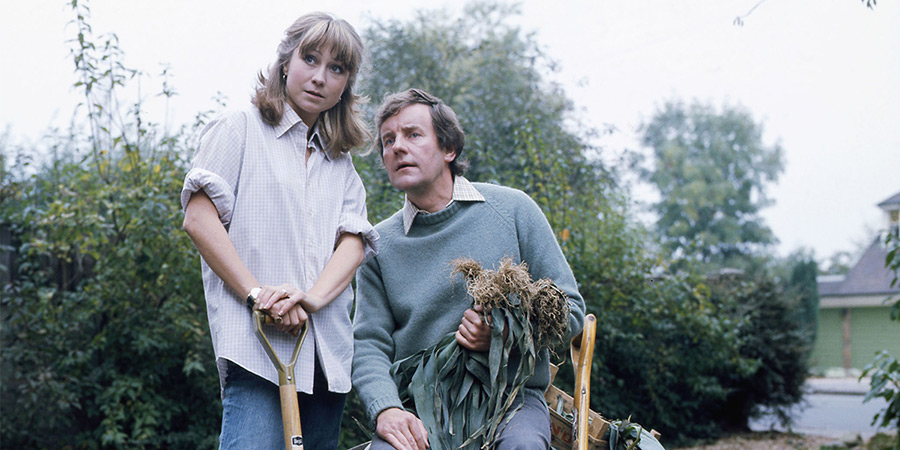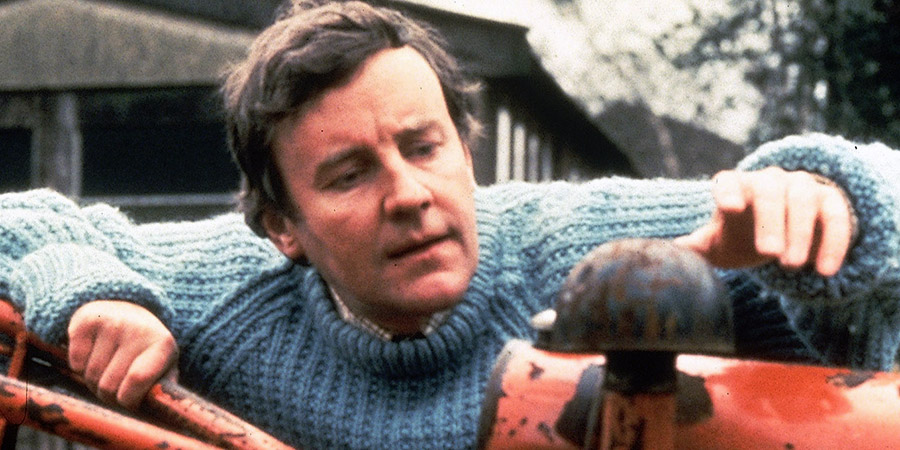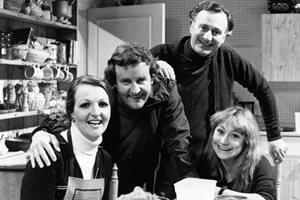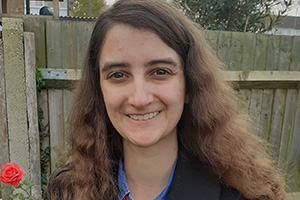
Back to basics on The Good Life

It is said that life begins at forty. That was certainly true for Tom Good who, on reaching this significant milestone, has an epiphany and quits his 9 to 5 job as a draughtsman to pursue a self-sufficient lifestyle with his wife Barbara.
No longer able to take his job designing plastic toys for cereal packets seriously, overnight Tom and Barbara turn their garden into an allotment, he swapping the office commute for a walk to the common to graze their goat. For, rather than moving to the countryside or a farm, Tom and Barbara remain in their home in Surbiton and seek to implement their alternative lifestyle in a comfortably urban, middle-class setting.
This was central to the success of the now iconic series because it created a high level of comedic tension - not least between the Goods and their neighbours, Jerry and Margo Leadbetter, who struggled to understand the maverick behaviour taking place on the other side of their fence.
Airing on BBC 1 from 1975 to 1979, The Good Life was written by John Esmonde and Bob Larbey. The duo had already enjoyed success with shows such as Please Sir! and would go on to have other hits with Ever Decreasing Circles and Brush Strokes. Here, they were tasked with creating a vehicle for Richard Briers, who had already established himself as a television actor having, amongst other things, played the lead in the 1960s sitcom Marriage Lines opposite Prunella Scales.
The inspiration for The Good Life came from Larbey's own experience of turning forty, their aim being to explore how different people might respond to reaching this age in their lives. The result was a comedy depicting the result of a middle-class midlife crisis. Briers played Tom, an essentially optimistic figure who convinces his wife that they can cut their household spending to a bare minimum and then sell or barter surplus crops for any essentials they cannot make or grow themselves. Barbara (Felicity Kendal) is soon keen to take on the challenge. They devise ways to grow fruit and vegetables in their garden, and house an ever-growing list of livestock, including chickens, a cockerel (Lenin), pigs (Pinky and Perky), and a goat (Geraldine). Although they suffer some setbacks and doubts during the series, overall Tom and Barbara enjoy their new life - much to the confusion of their more conventional neighbours.

Although the series was written for Briers, and indeed he received top billing in the credits as he was also the most well-known member of the cast, the success of the sitcom stems from the dynamic between all four core cast members, completed by Penelope Keith and Paul Eddington as the Leadbetters.
These other characters' casting and development was a combination of both luck and skill. The producer of the series, John Howard Davies, and the then Head of Comedy, Jimmy Gilbert, attended a production of Alan Ayckbourn's The Norman Conquests, with a cast including both Felicity Kendal and Penelope Keith. At that time neither had much experience of television comedy, but their chemistry on stage led Davis and Gilbert to conclude that they would be perfect for the roles of Barbara and Margo respectively.
Simultaneously, Esmonde and Larbey had seen a woman in a television advert for Benson & Hedges cigarettes and they felt she would be ideal to play Margo, but they didn't know her name or anything about her. When they mentioned this to Gilbert, he recognised the actress as Keith and explained how he had seen her on stage recently in the West End. This coincidence confirmed their feelings that she would be ideal for the fledgling sitcom project.
The role of Margo's henpecked husband and Tom's former colleague, Jerry Leadbetter, would eventually land in the lap of Paul Eddington, but he wasn't the first choice for the part. Initially offered to Peter Bowles, he turned it down assuming he would be unavailable for filming due to being in a play (with Richard Briers) at the same time. He later found out that the filming schedule would have meant he could have taken on both projects, but by then Eddington had been cast. Although disappointed at first, Bowles later said this had all worked out for the better since it would have been difficult to go onto play Penelope Keith's love interest in To The Manor Born (1979 - 2007) if he had been cast as Jerry.

Viewers familiar with the series now will find it difficult to imagine a single other actor playing any of the roles of the Goods and the Leadbetters: sure testament to the skills that the actors brought to their performances, and the quality of the writing in cementing the series as a much-loved classic. It is surely not insignificant that, after The Good Life came to an end, the BBC gave each of the cast members their own sitcoms to star in: for Keith it was the aforementioned To The Manor Born; Paul Eddington played politician Jim Hacker in Yes Minister and its sequel Yes, Prime Minister; Felicity Kendal played the lead in Solo, written by Carla Lane; and Richard Briers continued to work with Esmonde and Larbey when he was cast in Ever Decreasing Circles.
A potential danger of having such a strong cast, as other sitcoms have found out to their cost over the decades, is unhealthy competition about who has the best lines or the most screen time. But in The Good Life, there appeared to be a humility and understanding among the stars that each were integral to the success of the show - a rare of example of a series in which each actor is perfectly cast, not only for their individual role, but also to play opposite each of their other co-stars with genuine ease and chemistry.
A particularly joyous example of this is in the Series 3 episode The Windbreak War. After confusion about the position of a windbreak in the Leadbetters' garden results in a falling out between the households, all four end up getting tipsy on the Goods' homemade wine, resulting in harmless but hilarious wife-swap flirting. What could in so many other programmes have been murky or crass is instantly warm and delightfully silly in the hands of the four stars and their effervescent on-screen chemistry.

Even though Margo has long struggled to comprehend the Goods' lifestyle choice, and fears it could lower both the tone and house prices in the street - simply and haughtily named 'The Avenue' - she does often help her long-term friends out in times of crisis. One episode sees her get literally stuck in the mud when helping Tom and Barbara gather their first harvest after rain threatens to ruin the crop and none of their other so-called friends are willing to help. She also assists when one of the pigs goes into labour, working hard to save the runt of the litter.
Likewise, Tom and Barbara are there to support Margo when her Christmas Day plans are thrown into crisis and, in another episode, when Jerry is briefly fired from his job and his former colleagues and contacts disassociate themselves from him, he acknowledges that "Tom and Barbara are the only real friends we've got". During the four series, no other family members or significant friends are referred to on either side, and it is noticeable that neither couple has children. Therefore, in many ways the writing and situations portray the couples as being like family in that, whilst they sometimes disagree, or have different outlooks as aspirations, at the end of the day, they will always be there for each other. It is warming to know that these friendships continued off-screen, with Penelope Keith regularly hosting dinner parties for cast and crew.
The character of Margo, and Keith's portrayal of her, has become one of the most memorable things about The Good Life. A social climber and staunch conservative in both senses of the word, she involves herself with organisations such as the Pony Club and the Music Society. She keeps an immaculate home and is excellent at hosting dinner parties for her husband Jerry's (or Jeremy as Margo calls him when the social situation seemingly demands it) business clients, which is useful for when he seeks to ingratiate himself with his boss. It is interesting to note, therefore, that in the opening episode Margo is not seen at all and is only heard briefly off screen. Esmonde and Larbey listened to Briers, who encouraged them to "write up" her part as he quickly recognised her talents and potential for significantly contributing to the success of the series. Again in The Windbreak War, she is able to portray another side of the usually steely Margo, showing vulnerability as we learn that she was bullied at school, going some way to explaining her inability to either understand jokes or let her hair down once in a while.

As the writers got to know the actors more, they began writing for them by incorporating aspects of their personalities into the scripts. For example, Tom often whistles absent-mindedly whilst he is working. This was something that Briers just started to do one day, so Esmonde and Larbey wrote it in, thereafter becoming a more regular feature - almost like a catchphrase.
Another near catchphrase would come from Jerry when he complained about the traffic on London Bridge during his commute to the office. The writers incorporated this into the scripts because Eddington himself would often complain about the traffic when arriving at rehearsals. It was this combined high level of writing and acting that enabled the audience to feel they were genuinely a part of this world and that they knew the couples at least as well as their actual neighbours.
Such a rich tapestry is woven further with the inclusion of a range of characters who are regularly referred to, but never seen. For example Mr and Mrs Pearson, the Leadbetters' cleaner and gardener; Miss Mountshaft, the director of the Music Society who Margo is often at odds with; and Mrs Dooms-Paterson, an overweight member of the Pony Club. Their vivid descriptions, as associates of the respective couples, adds a layer of authenticity and enjoyment that contributes to the series' success.
Today The Good Life is widely seen as a simple, wholesome middle-class sitcom. It contrasts equally with the working-class sitcoms of the 1960s such as Steptoe And Son and The Likely Lads, as it does with the style of alternative comedy that emerged during the 1980s. Indeed, an infamous scene in The Young Ones (1982) sees punk Vyvyan berate The Good Life for being "so bloody nice" and perpetuating "the myth that everyone in Britain is a loveable middle class eccentric".

Whilst there may be elements of truth in this, it is ultimately an oversimplification. Where The Young Ones was clearly a product of, and reaction to, the early Thatcher era, The Good Life is clearly rooted in the culture of the 1970s. Apart from the outlandish 1970s decor and fashion, Margo's frequent contempt for the policies of the then Labour Government - which she saw as pandering to the demands of idle and inefficient tradesmen, thereby cementing Britain's decline as a leading economy - was something that was felt by many in the country at that time. Despite her conservative nature, she does have a rebellious side and is more than willing to challenge the hierarchy when she thinks it needs correcting - for example by refusing to pay her full council tax bill because they hadn't provided all the services as expected.
In his own way, Tom is also seeking to challenge the system by proving that it is possible to get out of the rat race and to do something genuinely fulfilling where you are not subjected to the demands of others. The Good Life was therefore more anarchic and political than is often realised, but this was smuggled in subtly under the guise of a traditional middle-class sitcom setting; which undoubtedly contributed to its success. Unlike other sitcoms of the same period, The Good Life has not fallen foul to criticisms of being politically incorrect or offensive and so it remains easily watchable across the generations. In this and others factors, it was perhaps ahead of its time. After the pressures of pandemic lockdowns and in an increasingly environmentally conscious world, many continue to seek a better work-life balance and enjoy the benefits of nature. Even Adrian Edmondson, perhaps ironic given his outburst as Vyvyan in The Young Ones, has admitted that he thinks The Good Life has stood the test of time better than his own younger series, and he now enjoys life on a farm in Devon, busy laying hedges and breeding lambs.
When the Goods' house is ransacked in the last episode of the series - casting the possibility of them continuing with their way of life into real doubt - the couple dust themselves down and Tom makes a toast to "the good life". Although most of us won't be able to follow exactly in Tom and Barbara's footsteps (indeed, writer Bob Larbey freely admitted that the lifestyle would never actually work), the series provides a form of escapism and opportunity to dream of what a good or better life would be like in our own contexts. This is surely something worth toasting to this very day.
Where to start?

Series 3, Episode 1 - The Early Birds
After accidentally waking the Leadbetters at an ungodly hour, Tom and Barbara promise future consideration and decide to live their lives by nature's clock while they have so much work to do. However, that soon proves easier said than done. This endeavour illustrates the tensions between the two households that is caused by the Goods' alternative lifestyle but how ultimately, they remain friends.
Help us publish more great content by becoming a BCG Supporter. You'll be backing our mission to champion, celebrate and promote British comedy in all its forms: past, present and future.
We understand times are tough, but if you believe in the power of laughter we'd be honoured to have you join us. Advertising doesn't cover our costs, so every single donation matters and is put to good use. Thank you.
Love comedy? Find out moreThe Good Life - Complete Collection

Celebrating 35 years since its original broadcast, and available for the first time in series order, this is the comedy series that put organic foods, self-sufficiency and green thinking on the map.
On his 40th birthday, Tom Good (Richard Briers) decides that he's had enough of the rat race, and that he and his wife Barbara (Felicity Kendal) should become self-sufficient. Overnight they begin to convert their suburban garden into a farm, complete with crops, pigs and chickens, homemade beer and more. But their choice of lifestyle doesn't exactly fit in with the neighbours, in particular Margot Leadbetter (Penelope Keith) and her henpecked husband Jerry (Paul Eddington) who find themselves hindering, but even sometimes helping against their better judgement. Almost unique in its vision, consistent in its comedy, this is entertainment at its finest, the kind that only comes with The Good Life.
First released: Monday 4th October 2010
- Distributor: Acorn Media
- Region: 2
- Discs: 8
- Catalogue: AV9956
![]() Buy and sell old and new items
Buy and sell old and new items
Search for this product on eBay
BCG may earn commission on sales generated through the links above.
- Released: Monday 29th March 2010
- Distributor: Acorn Media
- Region: 1
- Discs: 4
- Catalogue: AV9771
![]() Buy and sell old and new items
Buy and sell old and new items
Search for this product on eBay
BCG may earn commission on sales generated through the links above.
- Released: Friday 31st March 2017
- Distributor: BBC Worldwide
BCG may earn commission on sales generated through the links above.

